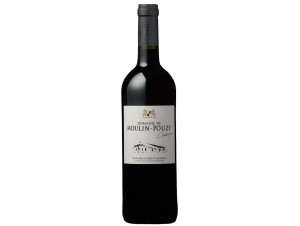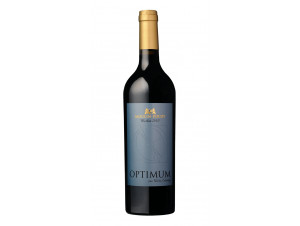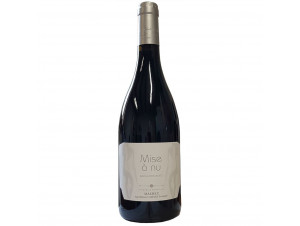You have no items in your shopping cart.
Wine Sud-Ouest
-
Top Selling-61%
-
Top Selling-30%
-
Top Selling-30%
- -13%
- -33%
- -16%
- -32%
- -15%
The Southwest is an eclectic wine region
The South West is an eclectic wine region that offers wines with a wide variety of profiles. But they all have one thing in common: the passion of the winemakers, a very advantageous climate and of course the good humour of the South.
But more seriously, this wine region offers us wines rich in flavour and full of character, just like the local gastronomy. The South West offers the greatest diversity of varieties with 50,000 hectares of vines and 300 different grape varieties. These wines accompany the best dishes and are a perfect match for the region's specialities. There are, among others, 30 Controlled or Protected Designations of Origin (AOC and AOP) and 13 Protected Geographical Indications (PGI).
There are all types of wine with 23 different red wines, 18 rosé wines, 22 white wines including 10 sweet or syrupy wines, one sparkling wine and one vin primeur. It should be noted that the South-West region represents a very large French production and that the Bordeaux vineyard is not part of it. Indeed, it is a vineyard in its own right. The Western wine region extends over a large area in which there are many, many small independent vineyards.
What is meant by South West
?The South West wine region covers a large geographical area from the Massif Central to the Pyrenees. The area concerned is very large and contains very different hinterlands. The four main areas are the foothills of the Massif Central, the middle Garonne, the Bergeracois and the Pyrenean foothills.
There are many vineyards. All of them have their own history and grape varieties, but what they have in common is that they are wines of character, just like the South West region.
A little history for the wines of the South West
The viticulture in the South West has its origins in ancient times in the days of the Gauls. They widely developed the vine culture on the territory.
As their conquest progressed, the Romans confiscated some of the Gallic vineyards to make them their own. Wine was then created in Cahors, Bergerac, Agen and Gaillac to be shipped from the port of Bordeaux. Further south, on the border with Spain, the wine of Jurançon was famous because it was said that King Henry IV was baptised in this wine. Even today, this legend is the reason for the success of Jurançon wine.
Although the monasteries continued to perpetuate the wine-making tradition of the region, the wines became less and less recognised as a law put the export of Bordeaux wines ahead of those from the hinterland. This law was repealed in 1776. Almost a century later, in 1860, the Phylloxera will devastate the vineyards. This aphid will destroy the vast majority of those of the entire country and make disappear ancestral grape varieties. It will take many years for the region to recover from this crisis and can again produce wine in quantity. Despite this, it was not until the 1950s that the wines of the South West rose from the ashes and made a real place for themselves on the French and world markets.
Characteristics of the vineyards of the South West
In terms of relief, there are many hills and forests. The South-West region is a very green region with few hills. One often notices the presence of vineyards on the banks of rivers. The biodiversity of such a region is great and offers the vineyards very different contributions.
As the region is very large, the vineyards are at different altitudes and have varying conditions. Indeed, the climates are very different from one area to another. The Pyrenees have a harsher climate and the Basque Country a windier climate, for example. Similarly, the Atlantic Ocean has a different influence on the grape varieties depending on their distance. Nevertheless, there are cold winters, late frosts, rainy springs and fairly warm autumns. The continental climates in the north bring more marked winters. In the south, however, there are hot, dry summers in the lowlands.
The many rivers in the region influence the flavours of the wines created. This causes a certain humidity which gives more character to the wines.The region is swept by the autan wind which cleans the air and in the Pyrenees the Foehn wind causes a faster maturation.
The areas where there are forests and waterways see the presence of a very particular fungus develop. The Botrytis cinerea develops on the grapes in the form of noble rot and increases the sugar concentration of the grapes.This is what makes it possible to obtain more sweet wines.
All vineyards have their own geographical characteristics. The soils are different just like the climates. We find soils richer in clay, gravel, sand or limestone depending on where we are. Overall, we can more regularly distinguish chalky-clay and iron-rich soils. In the Dordogne, you will find more siliceous clay soils and in the Tarn, gravelly clay soils.
The amount of wine produced in the South West region is around 4.5 million hectolitres per year, which is far from negligible.
What are the grape varieties of South West wines?
The richness of the South West region comes from its multitude of grape varieties. There are 300 varieties, including 120 indigenous grape varieties. These old varieties are recognized throughout the world like the Négrette or Duras. It should also be noted that the South West region represents the cradle of the world's oceanic grape varieties. Here is a non-exhaustive selection of grape varieties and their characteristics:
Some black grape varieties
Cabernet Franc
This grape variety has its origins in the Basque Pyrenees. Its dark grapes give wines a certain structure and raspberry aromas. It is less tannic than Cabernet-Sauvignon but more precocious.Cabernet-Sauvignon
It is certainly the most known grape variety of the general public. It gives birth to the great vintages of the Médoc. An ampelographic study specifies that it would be the fruit of a crossing between the Cabernet Franc and the Sauvignon blanc. Its blue grapes are characteristic and give the wines their dense colours, the distinctive sign of the great Cabernets. This variety brings currant and leather flavours.Duras
Very old grape variety grown in the Tarn which gives coloured, fruity, acidic wines with a lot of finesse. It is very present in Gaillac.Merlot
This grape variety creates wines with roundness. It is a supple grape variety, with black fruit aromas that is highly appreciated throughout the world. Its bunch has an intense colour and it matures quickly.Négrette
A variety of the Prunelard and Cot family, it is one of the oldest varieties. It gives rise to aromatic and fruity wines.Négrette creates aromas of flowers such as violets and sometimes leather. This grape variety is the main ingredient in Fronton wines.Prunelard
The father of Négrette, it is even older and comes from Gaillac. Its black bunches offer a coloured and balanced but quite full-bodied wine with flavours of spice and ripe fruit.Tannat
Originally from the Adour basin, this grape variety is the major component of Madiran and Saint-Mont. It has a very late ripening which brings a lot oftannin to the wines. It evokes very fruity and balanced wines.Some white grape varieties
Arrufiac
This is a grape variety with refined and very particular aromas from the Adour valley which has almost disappeared but is found in the composition of Pacherenc and Saint Mont Blanc.Baroque
A Landes grape variety par excellence, it creates very aromatic and sweet wines. It is the basis of the Tursan appellation.Chenin
This is a grape variety that gives vintage, fruity and with a lot of bouquet. Candied fruit, grapefruit, apricot and spices are the characteristic aromas of this grape variety which is widespread throughout the South West.Colombard
A proudly Gascon grape variety, it gives wines a fruity and lively taste. It is mainly found with exotic fruit aromas. It is mainly used in the creation of Côtes de Gascogne.Gros Manseng
This grape variety is widely cultivated throughout the region but it originates from the Pyrenean foothills. It is used to produce dry Jurançon, Pacherenc and Tursan wines.Mauzac
A grape variety with apple and pear and even honey aromas. Its grapes have a high concentration of sugar, which gives the wines a lively character and a fruity taste. It is assumed to have its origins in the Tarn valley.Ondenc
This grape variety is present mainly in Gaillac. The wines produced are sweet and very pleasant in the mouth but rather rare.Sauvignon Blanc
Planted mainly in Gascony, this variety brings aroma and vivacity to wines. In humid conditions, its grapes are susceptible to powdery mildew and noble rot.The main appellations of the South West
The South-West region has, among others, 30 Controlled or Protected Designations of Origin (AOC and AOP) and 13 Protected Geographical Indications (PGI). The wines from this wine region are varied and have authentic flavours. Here is a non-exhaustive selection of some appellations to know and enjoy:
Buzet
The wines of Buzet are born from Merlot, Cabernet Franc and Cabernet Sauvignon grapes for the red wines (i.e. 85% of the production) and from Sauvignon, Muscadelle and Semillon grapes for the whites. Since 1973, they have had the A.O.C. label.Mouth: Impression of charnu then tannic structure when the wine is young. One can distinguish the characteristics of a semi-wine.
Cahors:
The wine of Cahors is also an A.O.C since 1971. It is made from 70% Cot or Auxerrois grapes and offers only red wine. It is a rough wine that requires a fairly long ageing time.Fronton:
This is the common name for the Côtes du Frontonnais, which is an A.O.C made from a very old grape variety, the Négrette. Fronton wines are wines with intense aromas of red and black fruits with a bitter aftertaste. The Fronton appellation only offers red and rosé wines.Eye: The reds have a deep and very colourful robe, the rosés are very clear and bright.
Nose: The red wines are very fruity with notes of violets and flavours of the land.
Mouth: the red wines are tannic and powerful, the rosés are lively.
Gaillac:
Gaillac wines are A.O.C. wines produced in more than 73 communes in the South West region. This vast geographical area creates slightly different wines depending on where they are grown. There are whites with fruit notes, rosés, a sparkling wine and dense, deep reds.Mouthfeel: The red wines are round in the mouth, supple and fruity. Some are quite fleshy. The rosés are fresh and light. We notice different types of whites, the dry ones are lively with a slight acidity, the sweet ones are rich and oily, the sparkling ones are fruity.
Jurançon:
A.O.C since 1936, it is one of the most renowned appellations. It is found from the south of Pau to Mourenx. It is an appellation that only offers white wines.Mouth: The Dry Jurançon is delicate and fruity. The perlé is rounder and more flavoursome.
Madiran:
Madiran red wine is made mainly from the Tannat grape variety, which gives it a very marked taste.Mouth : A young wine, supple and fruity. As it matures, it is discovered to be more fleshy.
With what dishes to accompany the wines of the South West?
The diversity of wines from the South West Region allows for a wide variety of dining and wine pairings.
These wines are perfectly suited to local gastronomy of course but can be offered for less traditional meals. The sweet white wines like Monbazillac go wonderfully with festive meals such as foie gras, poultry and more exotic meals. Their sweet notes allow them to be a pleasant accompaniment to all desserts.
The dry white wines such as Gaillac, Bergerac and Jurançon provide freshness and diverse flavours. They are ideal for aperitifs and seafood dishes. The fruity aromas and suppleness of the red Bergerac bring madness to simpler and vegetable-based dishes. It becomes more intense with age and will then be ideal for charcuterie, duck and braised meats but also with cheeses such as Roquefort.
Aromatic red wines such as Cahors or Madiran are perfect for charcuterie starters in their early years. Older, they will rather accompany meat dishes in sauce such as cassoulet or lamb as well as mild cheeses. Finally, red wines of the Gaillac or Pécharmant type, which offer more aroma and robustness, will be best enjoyed with dishes of character such as game, lamb or black pudding for example.
Winemakers
Listed 799 winemakers
Production
450 million bottles per year (50% white wines, 25% red wines, 25% rosés)
Area
.
Soil and subsoil
Varies by terroir: clay-limestone, boulbene, pebble, clay, sand and sandstone-limestone
Grape variety
Reds and rosés : Cabernet Franc, Cabernet Sauvignon, Malbec, Duras, Fer Servadou, Gamay, Merlot, Négrette, Punelard, Syrah, Tannat
Whites : Arrufiac, Baroque, Chenin, Colombard, Courbu Blanc, Petit Courbu, Gros Manseng, Loin de l'Oeil, Mauzac, Ondenc, Petit Manseng, Sauvignon Blanc
Comté Tolosan
Côtes-de-Bergerac Moelleux
Côtes-de-Montravel
Gaillac Mousseux
Gaillac-Premières-Côtes
Marcillac
Pacherenc-du-Vic-Bilh sec
Saussignac
Vin de Pays de la Dordogne
Vin de Pays des Landes
Vin de Pays des Pyrénées-Atlantiques
Vin de Pays du Gers
Vin de Pays du Lot
Vin de Pays du Tarn











































 TWIL - Achat de Vin
TWIL - Achat de Vin


